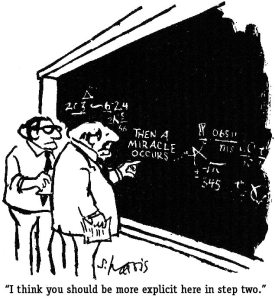Followup To: Approaching Logical Probability
Last time, we required our robot to only assign logical probability of 0 or 1 to statements where it's checked the proof. This flowed from our desire to have a robot that comes to conclusions in limited time. It's also important that this abstract definition has to take into account the pool of statements that our actual robot actually checks. However, this restriction doesn't give us a consistent way to assign numbers to unproven statements - to be consistent we have to put limits on our application of the usual rules of probability.

End of the sequence Logical Uncertainty
Previous Post: Approaching Logical Probability
While obviously not rigorous enough for something serious, one obvious hack is to do the "0.5 unless proven" thing, and then have a long list of special case dumb heuristics with different weights that update that without any proofs involved at all. The list of heuristics could be gotten from some unsafe source like the programer or another AI or mechanical turk, and then the weights learned by first guessing and then proving to see if it was right, with heuristics that are to bad kicked out entirely.